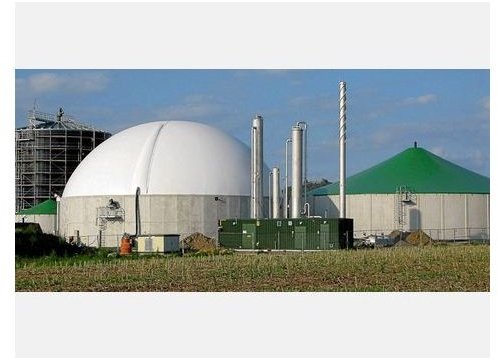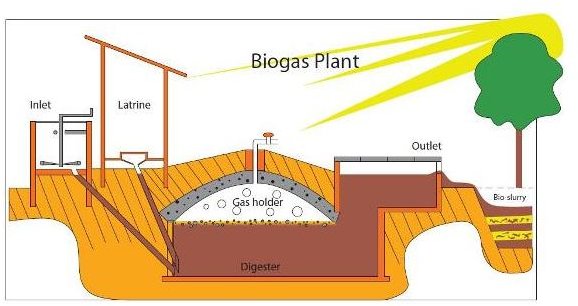Biogas Scrubbing and Compression
What is Biogas?
Biogas is a flammable mixture of different gases produced by decomposing biodegradable organic substances using microorganisms in the absence of oxygen. There are various technologies for the treatment of town gas, natural gas, landfill gas, and sewage gas. However, not all of these treatments are recommended for the biogas applications due to safety issues, price, and environmental concerns.
Physical Scrubbing Processes - Removal of Carbon Dioxide
In order to use biogas as a fuel in a vehicle, it is necessary to enrich it with methane. This can be achieved by removing the existing carbon dioxide. This way we can enhance the energy value of the gas to give a greater mileage with a fixed gas storage volume. Currently, there are four different methods for the carbon dioxide removal and the aim is to reach the vehicle fuel standard and natural gas quality for injection to the natural gas grid.
The four methods are water absorption, polyethylene glycol scrubbing, carbon molecular sieves, and membranes:
1. Water Absorption Method
The water absorption method of scrubbing is used to remove carbon dioxide and hydrogen sulphide from biogas. The process works because these gases are more soluble in water than methane. This is an entirely physical process. In this model, the biogas is pressurized and fed to the bottom of a packed column. Water is fed in from the top and exits the column with absorbed hydrogen sulphide and carbon dioxide. The fluid is regenerated by stripping or de-pressurizing with air. (Stripping with air is not recommended in cases of high levels of hydrogen sulphide, as the water will soon be contaminated with elementary sulphur and create operational issues.) When the stripping is complete, the water is circulated again to the absorption column.
2. Polyethylene Glycol Scrubbing Method
Polyethylene glycol scrubbing is similar to water scrubbing, i.e. it is a process of physical absorption. Selexol is one of trade names used for solvent. In this solvent, both carbon dioxide and hydrogen sulphide are more soluble when compared to methane. The major difference between water scrubbing and Selexol is that both the hydrogen sulphide and carbon dioxide are more soluble in Selexol, which results in lower solvent demand and reduced pumping. Added to this, halogenated hydrocarbons (contaminants in biogas from landfills) are removed when Selexol scrubbing is done. Like water absorption, the Selexol process is designed for recirculation, and again like water absorption, elementary sulphur stripping with air is not recommended. Removing the hydrogen sulphide in advance would act as an alternative.
3. Carbon Molecular Sieves Method
When there are a number of different gaseous compounds in the gas, the most prominent product used to separate the compounds is a molecular sieve. The molecules are loosely absorbed in cavities in the carbon sieve and are not irreversibly bound. Absorption is attained by using various mesh sizes and various gas pressures. When the pressure is removed, the compounds that are extracted from the biogas are desorbed. The process is also known as “pressure swing absorption,” or PSA.
4. Membrane Separation Method
With the membranes method, there two basic systems:
High Pressure Gas Separation
Pressurized gas (36 bars) is initially cleaned over, for example, an activated carbon bed to remove hydrogen sulphide and hydrocarbons from the oil vapors and raw gas from the compressors. The raw gas is upgraded in three stages. The waste gas from the first two stages is recycled and thereby methane is recovered. The waste gas from stage three is flared or sometimes used in a steam boiler because it still holds 10 to 20% of methane. The clean gas is compressed and stored in steel cylinders.
Low Pressure Gas Liquid Absorption Membranes
Gas liquid absorption membranes are a separation technique developed for biogas upgrading. The most important element is a microporous hydrophobic membrane that separates the gaseous from the liquid stage. Carbon dioxide is removed by an amine solution, and biogas is upgraded very efficiently from 55% methane to more than 96% methane.
A Schematic of a Biogas Plant
Chemical Scrubbing Processes - Sodium Hydroxide Scrubbing
In a chemical rather than physical process, absorption of a water solution in sodium hydroxide enhances the water’s absorption. Sodium hydroxide reacts with hydrogen sulphide to form sodium sulphide or sodium hydrogen sulphide. Both are insoluble, and this method is not generative. The main disadvantage is disposal of large volumes of water contaminated with the sodium sulphide.
Scrubbing is considered to be more suitable and is a purely physical absorption process that can also be used for the selective removal of hydrogen sulphide. Thus this type of scrubbing probably only will be considered for the simultaneous carbon dioxide and hydrogen sulphide removal in order to meet the fuel demand for biogas quality. Next to water scrubbing, Selexol scrubbing is also to be considered.
Compression and Storage
Methane is an inflammable gas. A common gas compressor poses fire hazards, since the auto-ignition temperature of biogas is 537 °C. Leakage and excessive temperature rise can be fatal. Hermetically sealed reciprocating compressors can be used, but they need extensive cooling systems. Otherwise due care during operation must be done so as not to allow the temperature to rise above safe limits.
Low-Pressure Storage of Biogas
Floating gas holders on the digester form a low-pressure storage option for biogas systems. These systems typically operate at pressures up to 10-inch water column (less than 2 psi). Floating gas holders can be made of steel, fiberglass, or a flexible fabric. A separate tank may be used with a floating gas holder for the storage of the digestate and also storage of the raw biogas.
Medium-Pressure Storage of Cleaned Biogas
Biogas can also be stored at medium pressure between 2 and 200 psi. To prevent corrosion of the tank components and to ensure safe operation, the biogas must first be cleaned by removing H2S. Next, the cleaned biogas must be slightly compressed prior to storage in tanks.
Biogas Scrubbing & Compression
In the present scenario of continuous energy crisis, there is no doubt that purified biogas is similar to natural gas. Hence it can be used in applications like cooking, generating electricity, stationary motors, and vehicles, too. According to Glub and Diaz, it has been demonstrated that biogas can be compressed, stored, and made portable. With a gross efficiency of 98.71%, biogas was compressed up to an absolute pressure of 11 bars in a LPG cylinder in a total of 18-20 minutes.
Biogas Infrastructure

References
Glub JC, Diaz LF, 1991. Biogas purification process. Biogas and alcohol fuels production, Vol II.: The JP Press Inc.
Ilyas, Syed Zafar, 2006, A Case Study to Bottle the Biogas in Cylinders as Source of Power for Rural Industries Development in Pakistan. World Applied Sciences Journal 1, Volume 2, ISSN 1818-4952, IDOSI Publications pp 27-130
Image Credits:
commons.wikimedia.org : Biogas Plant
